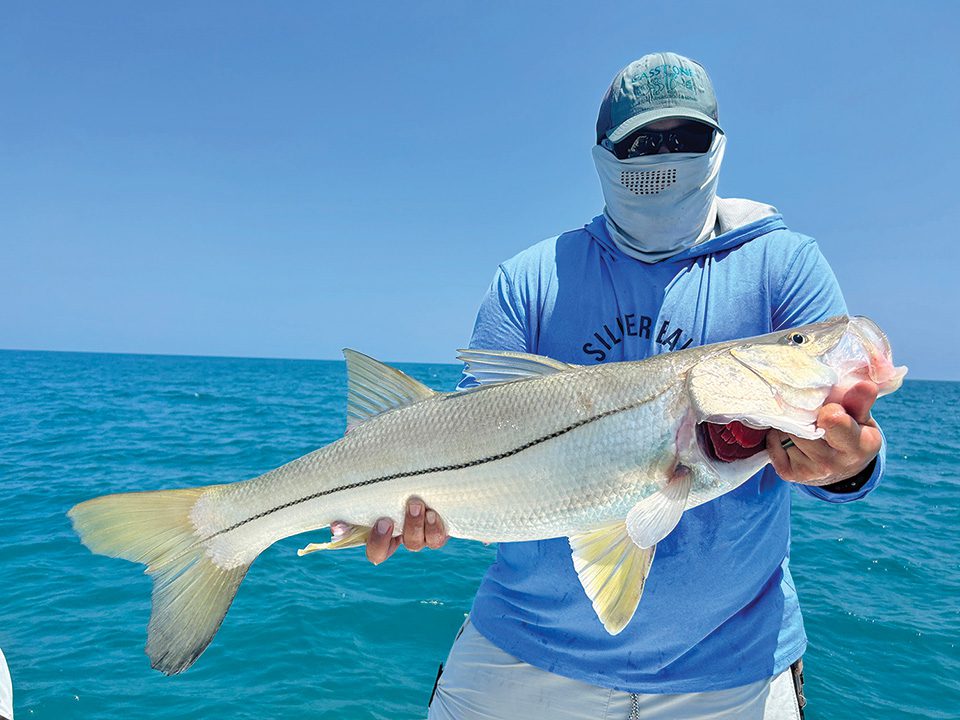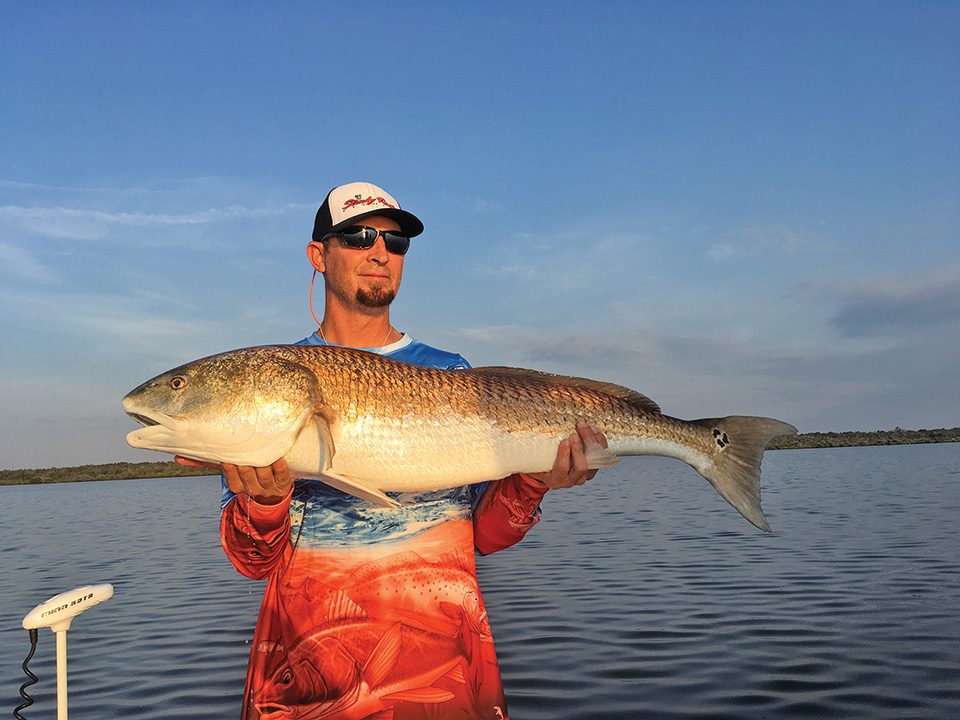PORT CANAVERAL: Cobia may still be a good possibility around the Canaveral waters this month if water temperatures stay in the lower 70-degree range. The spring run started last month, and usually runs through April. Large cobia style jigs, or live baits like pogies or croakers are great offerings to cast at these fish. Look for them free-swimming, following manta rays and turtles, or just hanging around weed patches and other debris floating on the surface. If possible, net the smaller fish to make sure they are legal to harvest instead of gaffing them. The new minimum size limit is 36 inches at the fork of the tail. That’s a pretty good-sized fish. If you gaff your fish and it only measures 35 inches or less, it has to go back in the water and will most likely die from the trauma of the gaff.
Tripletail are another species to look for when searching for cobia. Tripletail are usually quite plentiful if weeds are present in our nearshore waters. Anglers can get them to strike live shrimp or small jigs on most days.
Snook are another species that Capt. Justin Ross and I target on our charters this month. Most of the snook we catch are trophy sized fish that measure well over the slot limit in most cases, but they are awesome catch and release targets, and a lot of fun to pull on. Live baits like croakers, shrimp, pilchards, sardines and menhaden usually get these fish to strike. If you are lucky enough to catch one within the slot limit, they are extremely tasty to eat.
BANANA RIVER LAGOON: Anglers are hoping that more sea grass will return to the shallow flats in this body of water again this spring. Last spring we had a minor resurgence of grasses due to the restricted use of lawn fertilizers and herbicides that destroy it. We also had Caulerpa (which looks sort of like grass, but is actually an algae) that helped to stabilize some of the sediments that are usually stirred up by our late March and April winds. This led to some good springtime fishing for trout, black drum and redfish on the flats. The return of baitfish like glass minnows, pinfish, pigfish and fingerling mullet was notable, mainly because these small fish could use this vegetation for protection from predators. Crustaceans like shrimp and crabs benefited too. So, its vitally important that each and every one of us refrain from applying lawn fertilizers (a.k.a. Lagoon Poison) to our yards this spring in an effort to help save and continue the improvement of the Banana River Lagoon. I am asking people to take the money that they were going to spend on poisoning their lagoon waters with lawn fertilizers, and reinvest it into our lagoons by donating those funds to the Indian River Lagoon Clam Restoration Project (you can find more info at https://www.indianriverclamrestorationproject.org/support). This is a direct way that everyone can help to help clean up our lagoon waters. To date, this project has placed more than 25 million hatchery-raised clams back into the Banana and Indian River Lagoons. These clams are the internal filters that help to clean the nitrogen and other pollutants out of these waters that we love so much.
Until next month…Let’s go catch a memory!
Capt. Jim Ross
Fineline Fishing Charters
www.FinelineFishingCharters.com
(321) 636-3728


